The Kanelbulle (which could be translated as “cinnamon brioche”) is a baked pastry from North America and Northern Europe, popularized in the 1920s under the name cinnamon roll. Cinnamon buns took off as ingredients became easier to find after World War I. Learn more about the history of cinnamon rolls.
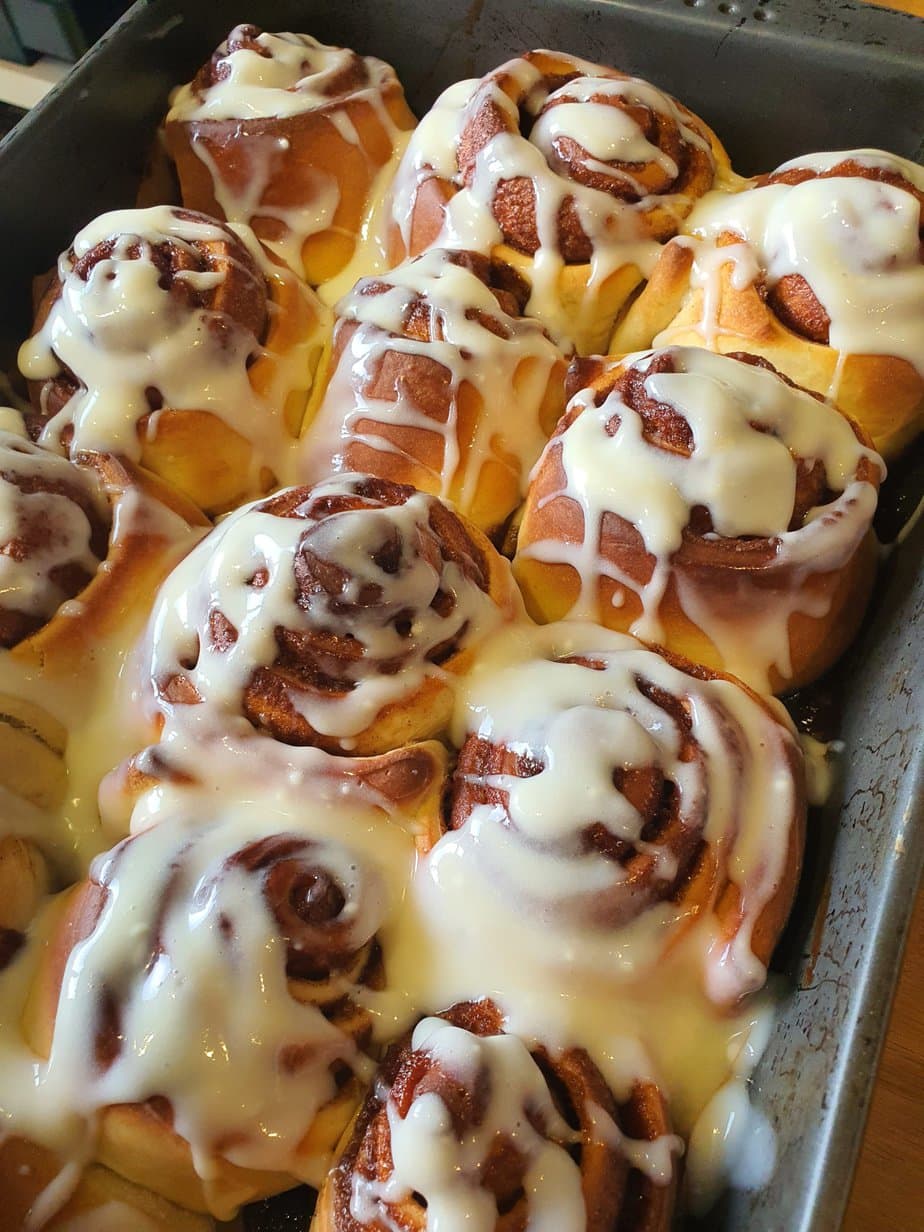
Cinnamon rolls are now an American classic—Instagrammable to the hilt—yet they’re too often parodied in Europe into something pretty but brittle and dry, nothing like the original texture.
It’s odd that in the land of brioche, bakery cinnamon rolls are often bland and dry. Luckily, with a bit of elbow grease, you can make truly delicious ones at home.
Unlike French pastry recipes, this is less about finesse and more about decadence.
Today is your lucky day: I’m sharing the authentic recipe, inspired by Joshua Weissman, a chef I admire immensely.
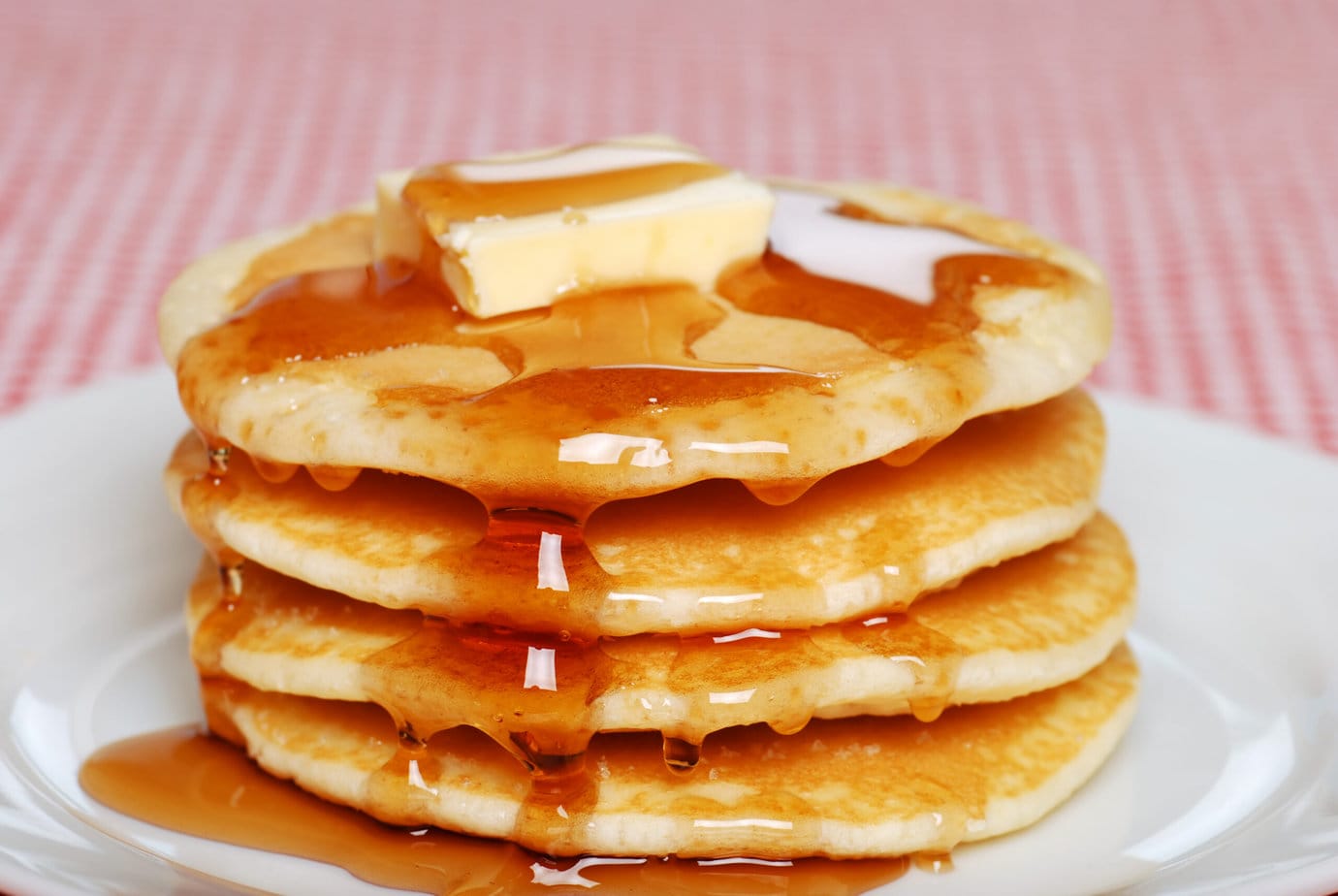
Tips for cinnamon rolls
About the amount of flour: The amount of flour can vary depending on the flour you use. If the dough is still sticky after a good knead, sprinkle in a bit more.
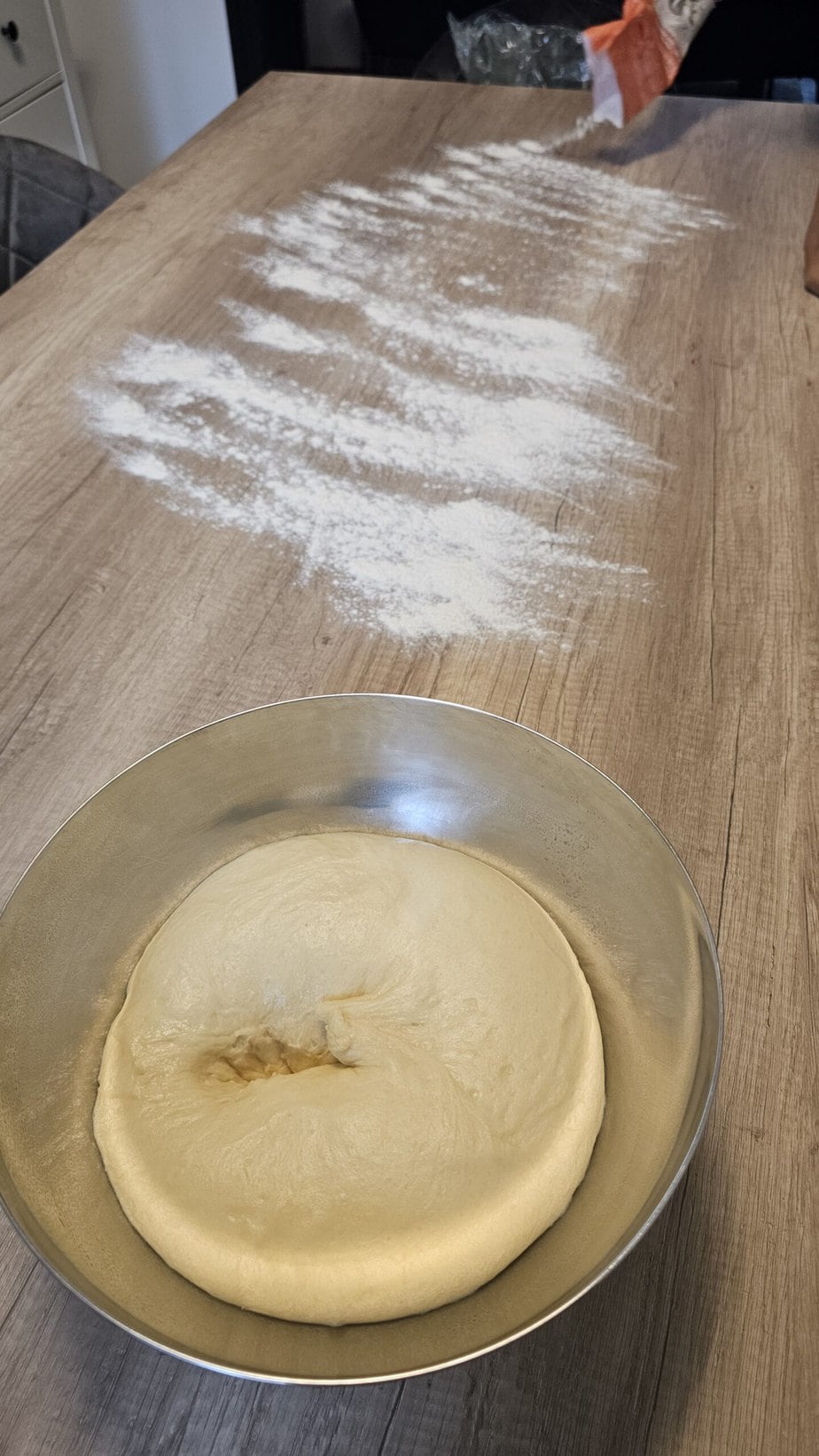
Vanilla extract: A few drops of vanilla extract—or a scraped vanilla bean—turn an already delicious cinnamon roll frosting into something downright irresistible.
Prep the day before: I often make them the day before and bake the next day. In this case, the rolls go into the baking dish, I cover with plastic wrap, and refrigerate overnight. Make sure to take them out well in advance—more than 6 hours—so the dough can return to room temperature, the yeast wakes up, and rising resumes. They’ll also release a brown syrup at the bottom of the dish; leave it there—it will caramelize as they bake.
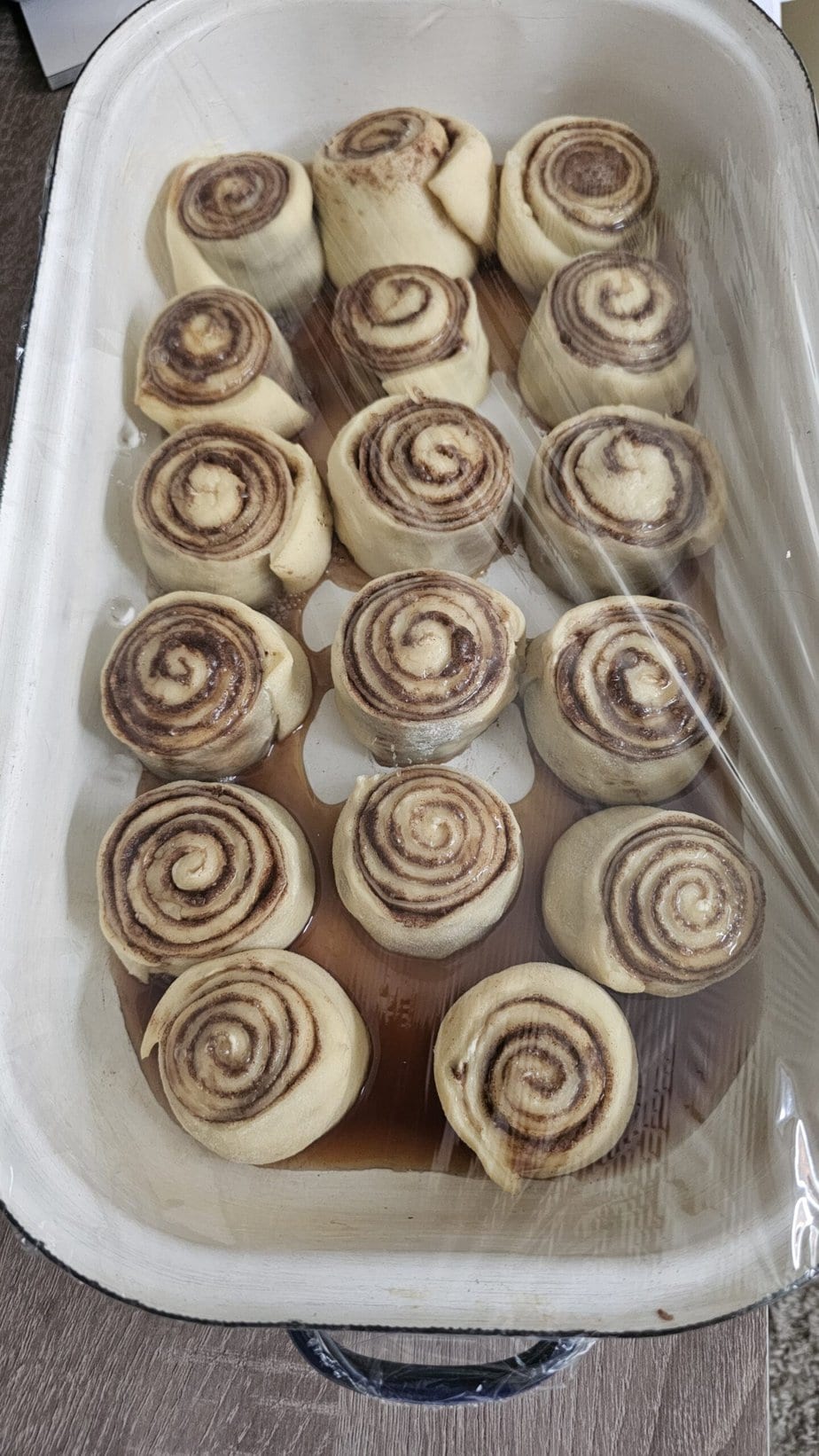
Milk temperature: Make sure the milk is lukewarm, not hot, before adding the yeast. Milk that’s too hot can kill the yeast and prevent a proper rise.
Keep the rolls chilled: If you’re not going to eat them all right away, cinnamon rolls keep very well in the refrigerator for a few days. Reheat gently before serving to bring back their pillowy softness.
Rolling: Roll slowly and tightly—that’s the key to great cinnamon rolls. Aim for a tight, even spiral.
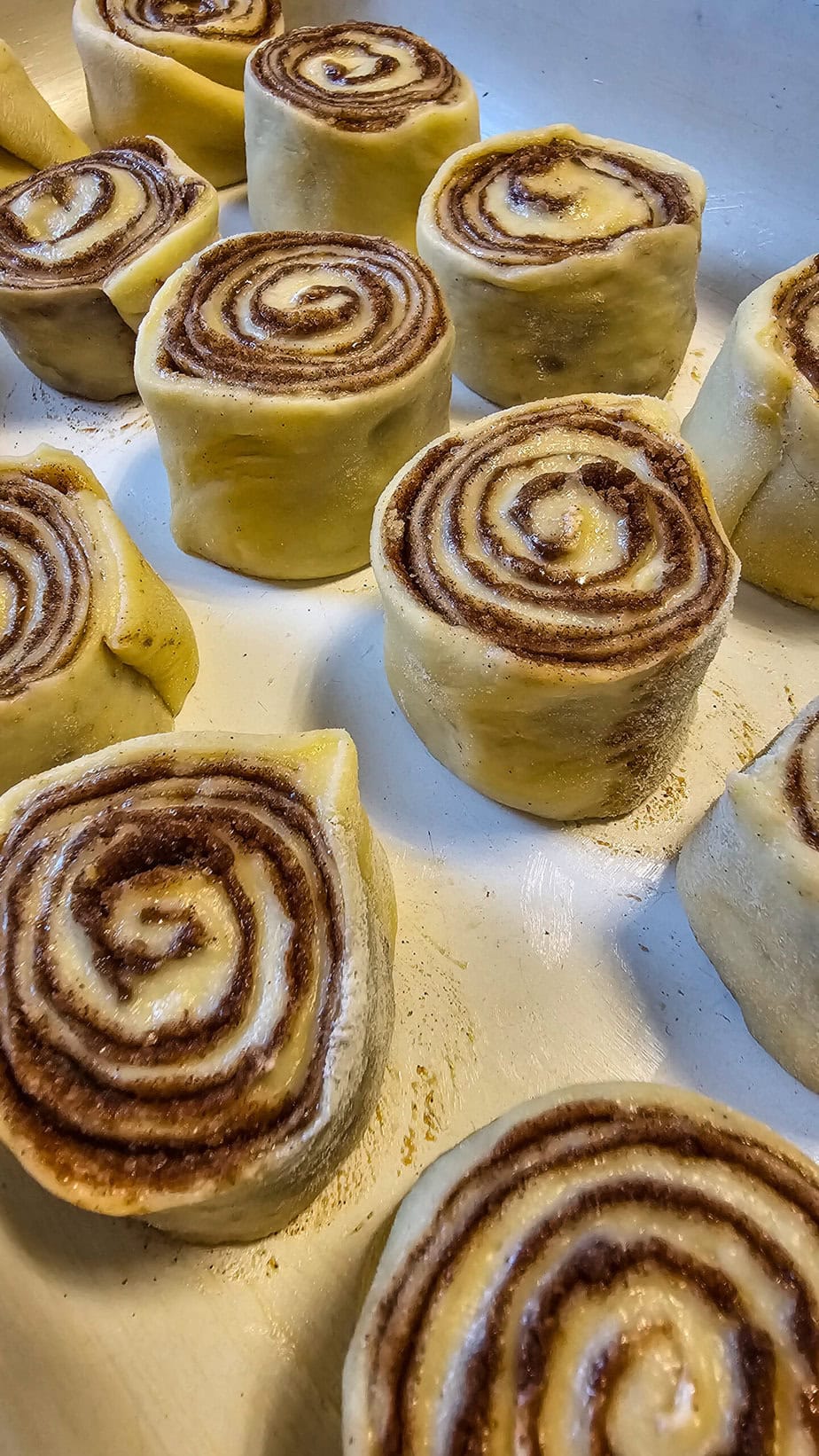
Add nuts: For a bit of crunch, feel free to add nuts or caramelized pecans.
Why not serve them with classic American cookies?
Alternatives to cinnamon
Sure, by definition a cinnamon roll should taste of cinnamon… but if it’s really not your thing, use cocoa powder, or swap the sugar-and-cinnamon filling for homemade praliné paste, such as hazelnut or pecan.
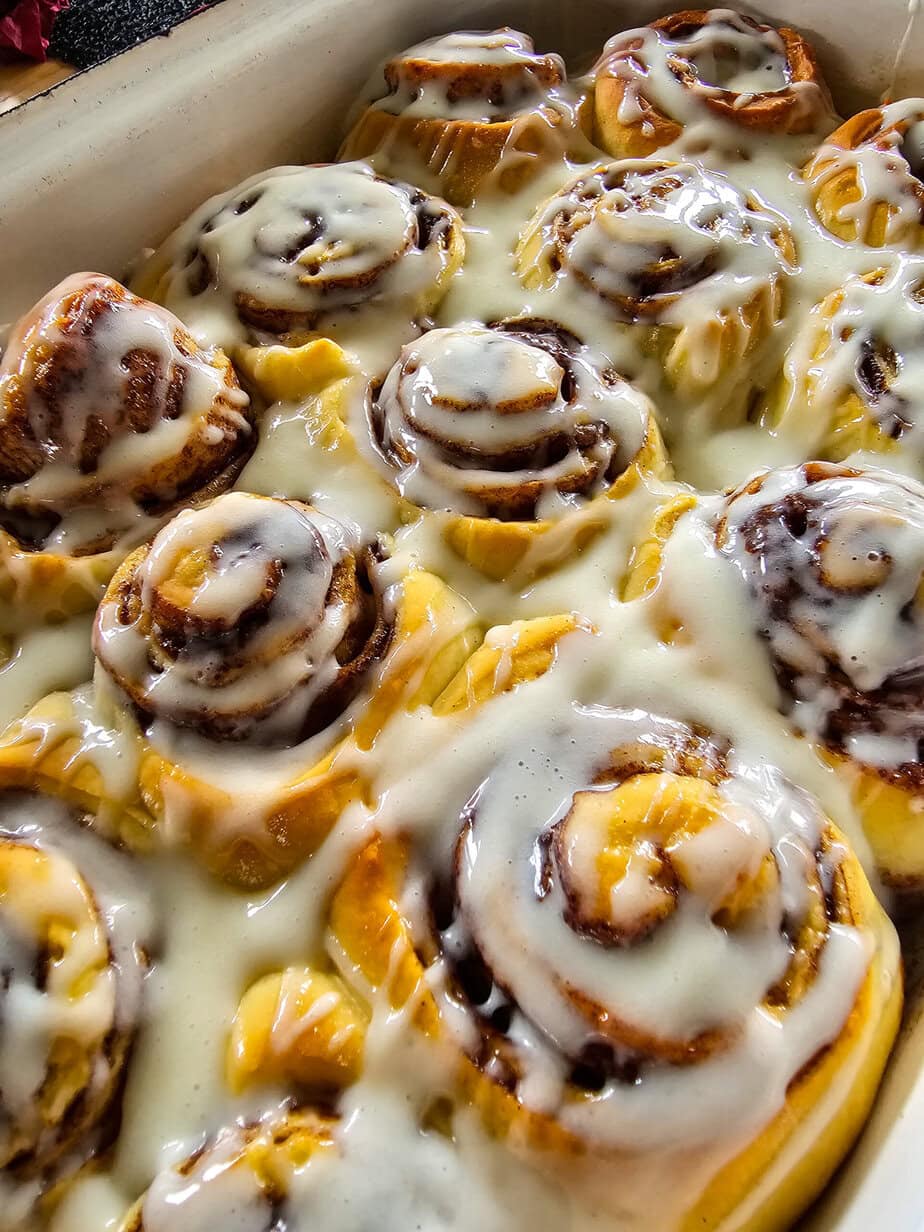
Ingredients
Dough
- 620 g T55 flour I get the best results with a blend of T55 and T65
- 107 g granulated sugar also called white sugar
- 6 g salt
- 84 g unsalted butter softened (not melted)
- 235 g whole milk lukewarm (33–37°C)
- 7 g instant yeast not baking powder; it’s granulated baker’s yeast
- 2 eggs
- 1 egg yolk
Filling
- 225 g brown sugar or light brown sugar
- 14 g cane sugar
- 17 g cinnamon
- 100 g unsalted butter softened (not melted)
Glaze
- 115 g cream cheese such as Philadelphia
- 90 g powdered sugar also called confectioners’ sugar
- 45 ml whole milk
- 1 teaspoon vanilla extract or a vanilla bean; both optional
Instructions
- In a bowl, whisk together the flour, granulated sugar, and salt.620 g T55 flour, 107 g granulated sugar, 6 g salt
- Add the softened butter. Mix well using two forks, or your hands. Pinch the mixture to work the butter into the dry ingredients.84 g unsalted butter
- In another bowl, whisk together the lukewarm whole milk and instant yeast. Let stand for 5 minutes.235 g whole milk, 7 g instant yeast
- With a dough hook on medium-low speed, add the yeast–milk mixture, the whole eggs, and the egg yolk to the flour mixture. Knead for 5–10 minutes, until smooth and cohesive. If kneading by hand, knead for 30 minutes and skip the knead in step 5.2 eggs, 1 egg yolk
- Knead on a lightly floured work surface for 1 to 3 minutes. Dust with more flour if the dough is too sticky.
- Transfer the dough to a greased bowl, cover with plastic wrap, and let rise in a warm place (20–25°C) for 1 hour 30 minutes. It should double in volume.
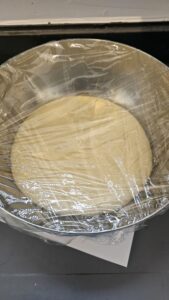
- Once the dough is ready, mix the brown sugar, cane sugar, and cinnamon in a bowl.225 g brown sugar, 14 g cane sugar, 17 g cinnamon
- Turn the dough out onto a large, floured surface and roll it into a large rectangle (about 65 cm long and 35 cm wide). Flour the rolling pin as needed to prevent sticking.
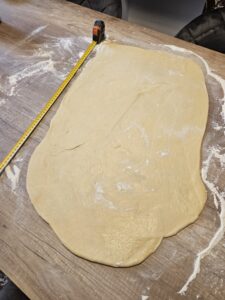
- Spread the softened unsalted butter over the entire rectangle. I use a pastry brush for this.100 g unsalted butter
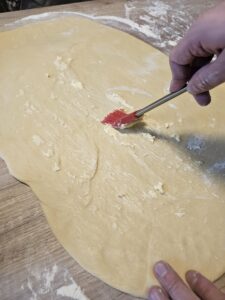
- Sprinkle the sugar filling evenly over the dough, then gently press it in with your hands so it adheres. Cover the entire surface.
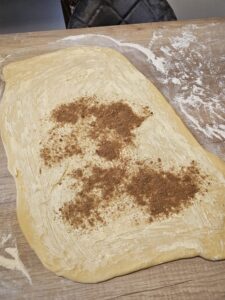
- Roll up tightly, working little by little, from the bottom to the top along the long side (so you're rolling across the width).
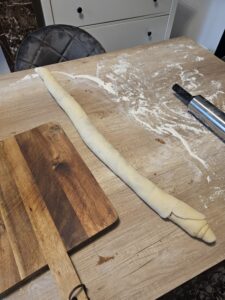
- Cut into 5-cm-thick slices.
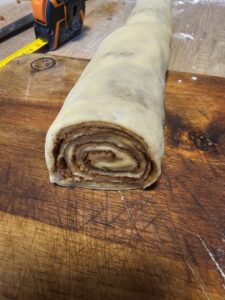
- Grease a baking dish, line the bottom with parchment paper (optional), arrange the rolls spiral-side up, and cover with plastic wrap.
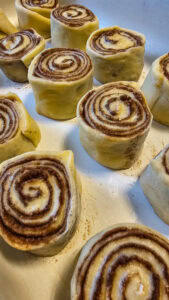
- Let rise at room temperature for 30 to 45 minutes. At this point you can refrigerate to bake the next day before this second rise (see notes).
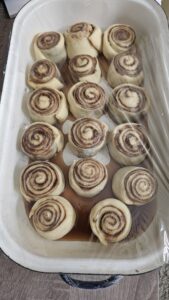
- Bake in a preheated 175°C oven for 17 to 20 minutes (remove the plastic wrap first!). Let cool in the pan for 15 minutes.
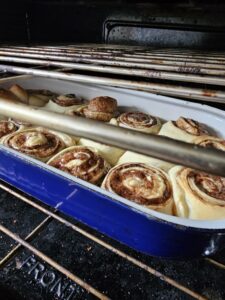
- For the glaze, beat the cream cheese, then mix in the powdered sugar until smooth. Whisk in the whole milk. The glaze will be pourable.115 g cream cheese, 90 g powdered sugar, 45 ml whole milk

- Drizzle the rolls with the glaze and serve.

